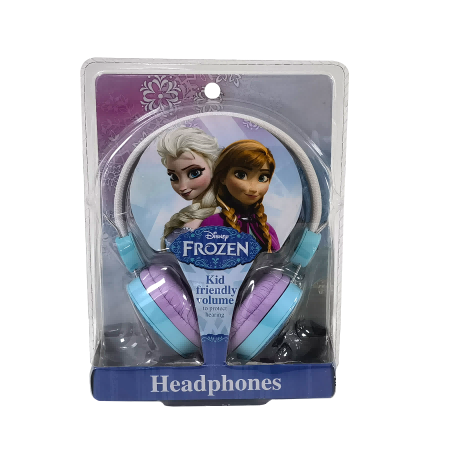
China's overseas e-commerce business quietly“creates wealth”in Japan and South Korea
- Consumer
- 2024-03-05 11:02:57
In the past year, in the United States, China’s overseas e-commerce giants have been engaged in business wars and lawsuits. However, in the Japanese and Korean markets at home, there has not been a similar competition between Mars and the earth. Although in July 2023, Temu continued its previous strategy of spending money to buy volume in the United States and has successively entered South Korea and Japan.
However, compared with the price war in the United States that is "lower than the ex-factory price after subsidies", in the Japanese and Korean markets, the war drums have started to sound between SHEIN, AliExpress and Temu, which were the first to enter the game, but the smell of gunpowder is not strong. Even Temu, who has always been a strong disruptor, is quite cautious in entering Japan and South Korea.
Take Japan as an example. Although it claims a "maximum discount of 90%", the intensity of "600 off for purchases over 3,700 and 1,200 off for purchases over 7,500" on the first day of launch is not only lower than AliExpress Japan in the same period, but not even as good as ordinary domestic shopping festivals. "200-30" preferential intensity. Its advertising purchase volume also stalled very quickly. It just went online in July and began to weaken its advertising intensity in August.
The e-commerce war between Japan and South Korea is quiet, and the general public has limited perception. Only those in the industry can truly feel that the giants are involved in Japan and South Korea.
"In the past year, logistics prices between China, Japan, and China and South Korea have been driven down by SHEIN, Temu, and AliExpress," Yang Yusen, a trader settled in Japan, told Alphabet. At the same time, China has shipped a large number of goods and prepared goods overseas. Platforms have allowed many logistics companies to sign a large number of aircraft, and the logistics speed has ranged from 10 days to 5 days, and even to next-day delivery.
From the perspective of market share, the presence of overseas giants in Japan and South Korea cannot be ignored. The Korea Economic Daily cited data.ai data as saying that between September 25 and October 9, Temu ranked first in the application download list in South Korea with 399,000 downloads, and AliExpress ranked third with 257,000 downloads. .
One of the reasons why the rumbling gunfire at home has not been felt domestically is the gap in the size of the e-commerce markets between Japan, South Korea and the United States.
According to ecommerceBD forecast, the sales revenue of the U.S. e-commerce market is expected to increase by 14.4% in 2023, reaching 1.1 trillion U.S. dollars, contributing 9.6% growth rate to global e-commerce sales, making it the second largest e-commerce market in the world; Japan and South Korea ranks third and sixth respectively. Japan’s growth rate is expected to be 6.8%, reaching US$153.984 billion. South Korea’s sales revenue is expected to reach US$85.54 billion.
There is a significant gap in the size of the e-commerce markets between Japan, South Korea and the United States, so the giants are naturally more cautious in their investment.
According to people close to SHEIN, SHEIN’s annual revenue in Japan has now reached 140 billion yen, but the team still only has a dozen people. The night before the opening of Japan’s first physical pop-up store, the company’s executive plane landed in the early morning. Still "ironing" with the local team overnight.
In March 2023, AliExpress announced that it would invest approximately 100 billion won (US$76.4 million) in the Korean market to optimize user experience. But the first AliExpress team to enter Japan and South Korea only had a few dozen people.
Obviously, the cross-border giants that have just entered the Japanese and Korean markets have no time to fight a subsidy war like they did in the European and American markets. This makes the war in the Japanese and Korean markets relatively deserted.
However, Japan and South Korea are already a piece of meat, and now all the major players have entered the market. Outside the United States, how giants compete for the Japanese and Korean markets will undoubtedly be a major focus of overseas e-commerce in the future.
A
Participating in this cross-border e-commerce battle between Japan and South Korea are the veteran AliExpress, which entered the Korean market in 2018, SHEIN, which entered Japan and South Korea first, and of course, the menacing Temu.
Before using Temu, Wang Ying, who lives in Fukuoka, Japan, noticed SHEIN, which launched large-scale advertising on YouTube in 2022. SHEIN, which is popular among Japanese high school students and college students on Twitter, has taken the lead in firmly occupying the clothing track. "SHEIN is good-looking and cheap. Similar dumpling bags are twice as expensive as ZARA and Uniqlo."
The important reason why overseas giants have failed to fight in Japan and South Korea is that in the Japanese and Korean markets, they have their own strengths and have not yet attacked each other's fields. Unlike Temu, which specializes in small commodities, AliExpress can become South Korea's third largest e-commerce platform in 2023 by relying on "big and good items" such as umbrellas, new energy vehicle accessories, kitchen appliances, and even mattresses.
Another important reason why the giants failed to fight in Japan and South Korea is that they already have their own advantageous battlefields.
According to data from Wiseapp Retail Goods, a Korean application software analysis service provider, in October 2023, the number of AliExpress Korean users soared to 6.13 million, surpassing the old shopping website GMarket and becoming the third largest e-commerce platform in South Korea.
In the Japanese market, AliExpress is left behind by SHEIN. Before Temu, SHEIN ranked first among shopping apps in 2022. Following the pop-up store, it has opened a permanent physical store in Japan in November 2022.
However, with Temu occupying the top list of shopping app downloads in Japan and South Korea in 2023, the pattern has quietly changed, and the war will begin sooner or later.
The first step for giants to compete for the Japanese and Korean markets is to "win" suppliers.
Unlike the "European and American markets" in the hinterland of overseas markets, Japan and South Korea are quite unfamiliar in the eyes of factory owners. Whether it is South Korea, where the e-commerce market is fiercely competitive, or the Japanese market, where offline supermarkets dominate, as latecomers, China’s overseas platforms often need to find unmet needs and quickly capture them. The support of domestic factory bosses must be obtained.
Therefore, finding suppliers willing to try the Japanese and Korean markets has become the first step for giants to go overseas. Cheng Sheng, an industry assistant at AliExpress, told Alphabet that the first thing he does when he comes to work every day is to understand the market demand in South Korea from Korean KOLs, and then provide feedback to "market merchants" based on the demand.
"A leading new energy car company in South Korea has a lot of demand for accessories. In order to find supply factories, we have to contact the most upstream chip manufacturers or the most downstream sales chain," Cheng Sheng said, in cross-border e-commerce In the offline arena of merchants, finding powerful suppliers and convincing factories to move in is often the first and most important step. In order to leverage suppliers, we went back and forth four times a month, "local waiters and industry waiters took turns," and finally persuaded the corresponding parts suppliers to settle in the Japanese and Korean stations.
In Yiwu, Guangzhou, and Shenzhen, bosses in different industrial zones often have their own characteristics. "The bosses in Yiwu are the most pragmatic and can discuss business in their home warehouses. The bosses in the north go to restaurants. Compared with the fast-paced bosses in Shenzhen, the bosses in Guangdong often make appointments at teahouses to drink tea and chat." Cheng Sheng told Alphabet that in the past three years, many established foreign trade factories have begun to contact e-commerce platforms, and their attention has also quietly turned to Japan and South Korea.
Sales growth in the Japanese and Korean markets has become the most direct and critical factor in motivating large suppliers.
In the past three years, the foreign trade orders of the factory run by women's clothing trader Zhang Hongjun have plummeted by 60%, and there is no hope of receiving payment for the orders that have been produced. "Many customers directly use the goods to pay for it." After receiving the invitation from SHEIN buyers, Yixin Zhang Hongjun, who just wanted to clear the goods, "quoted the warehouse price directly."
Although the product styles do not meet the aesthetic preferences of European and American users, "plaid skirts and linen shorts", these Uniqlo-like items, "sold 300 pieces on the first day in Japan and South Korea, and sold out in more than a month. "The same model can be sold in Japan for twice the price in China," which also allowed Zhang Hongjun to see new profit margins.
Finally, with the help of SHEIN's 15% new user discount, Zhang Hongjun quickly cleared out the remaining goods, and also led many factory owners to start researching Japanese plaid skirts and stacking socks. "We still need to re-make goods for Europe and the United States, but for Japan and South Korea, It only requires slight modifications, and the domestic supply price is lower than that of local Japanese companies, so the price advantage determines sales volume."
B
Compared with Europe, the United States, Japan and South Korea, the wealth creation myth of China’s overseas e-commerce platforms has just begun.
"At first, Korean orders came in all the time, and I was wondering if I had been hacked."
As a native of Chaoshan, Mary, the founder of ZEUSLAP, entered AliExpress as early as 2013. In 2019, her portable monitor became popular due to a popular blog post by a Korean buyer. South Korea.
Previously, as a factory, Mary's monitors were mostly sold to Russia and Brazil, and her "lucky start" also coincided with the beginning of AliExpress's expansion into the Japanese and Korean markets.
"During special promotions, new products can sell more than 5,000 units at a time." After trying new products in the Korean market, the market response gave Mary more confidence in Korea. Not only did the brand quickly gain popularity, but at the same time, agents The continuous batch orders every month also made Mary feel the potential of the Korean market.
From 2019 to now, Mary has firmly ranked first in the entire industry category on AliExpress. "Our agents are urging shipments every day." Mary said with a smile. As AliExpress ranks among the top three in the Korean e-commerce market, she also sees the consumption potential of the Korean market with only tens of millions of users.
Recently, Zhang Hongjun has also begun to test the waters of Temu. However, compared to SHEIN's positioning as a clothing franchise in Japan, Temu looks more like "Little Yiwu" to Zhang Hongjun. In Japan and South Korea, Temu's products are smaller and lighter. "Currently, the best-selling products are mobile phone cases, small pendants, and stickers. As long as the store has enough categories, there will always be sales." But compared to Japan and South Korea, the same product Sales in the U.S. "could double."
At the same time, in Japan and South Korea, using TikTok to attract traffic for their products has become a routine operation for Zhang Hongjun and his colleagues. “Cooperate with MCN, ask experts to shoot promotional videos, and then guide people from TikTok to independent websites.” TikTok has the young user group they most hope to acquire.
Like Zhang Hongjun, Mary recently started to test TikTok. Although TikTok has not yet opened its Japanese and Korean sites, during the Black Friday promotion in the United States in October, "more than 500 units were ordered in one day, and more than 4,000 units were sold in just a few days," which still allowed Mary to smell the traffic dividend.
The sales growth of merchants will naturally drive the sales growth of the platform, which also makes local traders feel the "aftershocks".
As the founder of Japan Umori Co., Ltd., Yang Yusen has been in Japan for 6 years. The popularity of platforms such as SHEIN and Temu has not only brought down the cost of logistics in Japan, but now the shipping price between China and Japan is almost the same as using Amazon in Japan. The distribution of goods is the same", which also allowed him to benefit from the traffic bonus of "next day delivery".
The East Asian market represented by Japan and South Korea is second only to Europe and the United States.
To North America, "Japan and South Korea are closer than Europe and the United States. For Temu, which does not have overseas warehouses, shipping to the European and American markets needs to be shipped from Guangdong and Oceania, but the logistics cost in Japan and South Korea is significantly lower. At the same time, for Temu, it is also It is the best market to improve service quality and verify business strategies." A person close to Temu told Alphabet that whether it is the advantage of logistics costs or the potential for future e-commerce development, it is understandable for Chinese overseas giants such as Temu to choose the Japanese and Korean markets.
Whether it is AliExpress or Temu and SHEIN, which entered later, they are still expanding the Japanese and Korean e-commerce markets. However, at this stage, they themselves are also in the exploratory stage, and the manpower and material resources invested by Japan and South Korea are also limited. This means that the Japanese and South Korean e-commerce markets have not experienced the expected war from the outside world.
C
The giants are going overseas in Japan and South Korea, and the merchants are making enough money, but the life of the platform is not as easy as imagined. They were complained about quality problems and were sued. Giants exporting to Japan and South Korea have been involved in many lawsuits.
"Japan's economy is currently in a downturn, and Japanese people who want cheap money will also use Temu to buy things," Wang Ying explained the rapid increase in downloads of Temu in Japan.
As a user, Wang Ying’s experience with Temu is really not good.
Previously, as a Chinese working and living in Japan, Wang Ying was more accustomed to placing orders on Taobao and then shipping them overseas to Japan. Whether it was domestic snacks such as spicy strips, duck necks, etc., and the air-conditioning frame in the same style picture, Wang Ying I specifically found the same model on Taobao for 20 yuan. Nichia (Japanese station on Amazon platform) costs 1,000 yen, and Temu only costs less than 200 yen. However, after waiting for more than a week, in Japan, where you can only rely on air conditioning for heating in winter. , but Wang Ying found that "the one bought by Temu cannot be installed at all."
Although the seller proactively stated that he could "only refund", Wang Ying not only had to place an order with Nichia again, but what made her even more troubled was that Japan is a country with very strict garbage recycling management, and different garbage recycling rates are set. Time, some garbage collection needs to be booked by phone in advance, and even the regulations are different in different areas. Sometimes if you are not satisfied with the tables and chairs purchased online, it will cost an additional 500 yen to dispose of the garbage.
In the end, in order to throw away the product ordered from Temu, Wang Ying had to specifically inquire about the disposal method of the air conditioner outer frame garbage. This setback also made Wang Ying never place an order with Temu again.
After all, “Although the products on Temu only cost 100-200 yen, there are also many 100-yen stores in Japan. Temu wins because of its wide range of categories, but in Japan, users pay more attention to the purchasing experience, and the quality of offline shopping is also better. There is a guarantee that in China, only refunds will make the buyer happy and the seller save trouble, but in Japan, after-sales service like Temu is not feasible.”
In the clothing category with higher return rates, no brand can escape complaints from users.
In addition, according to recent Korean media reports, AliExpress has faced controversy over the sales and distribution of counterfeit products in the Korean market.
Korean media pointed out that although AliExpress held a special press conference in December 2023 to announce measures to prevent the sale of counterfeit products and invest 10 billion won (US$7.47 million) to protect customers and intellectual property rights, counterfeit goods are still very common on the platform. Easy to buy. Ongoing disputes such as delivery delays, the proliferation of counterfeit products and quality issues still need to be resolved.
In addition to quality concerns caused by low prices, UNIQLO has also recently sued three companies. UNIQLO said that these three companies sold counterfeit UNIQLO round mini shoulder bag products (also known as "dumpling bags") and demanded compensation for losses.
SHEIN is also constantly emphasizing the cultivation of original designers and the protection of intellectual property rights to ensure that its road to listing can proceed smoothly. It is understood that SHEIN has stated that it will invest more than 55 million US dollars within two years to support nearly 3,000 designers around the world. Designers create original designs.
According to the OpenSecrets report, SHEIN’s recent expansion of lobbying expenditures in the United States is mainly in response to the United States’ supply chain investigation. Temu, who is currently in the limelight, was investigated by a special committee of the U.S. House of Representatives for similar motives. Although OpenSecrets has not yet tracked Temu’s U.S. lobbying records, according to its report, Temu has “spent a lot of money” lobbying in the hope of preventing outside criticism of its supply chain in China.
Of course, it’s not easy to gain trust in a new market. According to Opensurvey statistics, Coupang and Naver Shopping together account for nearly 65% of South Korea’s e-commerce market share. In Japan, Amazon, Rakuten, and Yahoo are entrenched, and physical stores are everywhere. Although the Internet penetration rate reaches 96%, "compared to the United States and Southeast Asia, Japanese users have lower consumer sentiment and are more picky. E-commerce The development speed in Japan is very slow, and it often takes several years for a product to be sold." Yang Yusen said, "If China's overseas platforms want to build customer trust, they need to do it step by step."
Among the proportion of e-commerce, overseas direct purchases only account for a small part. According to Yonhap News Agency, South Korea’s cross-border e-commerce import volume increased by 26.9% year-on-year to 6.7567 trillion won. In terms of import sources, China increased by 121.2% year-on-year, catching up with the United States for the first time and becoming South Korea's largest source of imports for cross-border e-commerce. However, in absolute terms, South Korea's imports from China were 3.2873 trillion won, or approximately RMB 17.72 billion. Yuan.
The Japanese and Korean markets are a piece of fat, but they are indeed difficult to crack. For the giants, if they want to truly gain a foothold, they may need to be armed to the teeth.
Shenzhen Fly International Logistics, with many years of experience in air transport, sea transport, and express delivery channels, has maintained close long-term cooperation with various airlines, shipping companies, and the four major express delivery companies. It adheres to the principle of people-oriented and integrity. The company has experienced port Customer service at the front and back ports patiently solves professional shipping problems in international logistics, efficiently tracks cargo information, and strives to build the Xiangfeiyang brand with self-operated and self-controlled air and sea delivery routes in the United States, Canada, the United Kingdom, and Europe. It has more than 10,000 square meters of overseas warehouses in the United States. There are more than 3,000 square meters of overseas warehouses in the UK. Based on the type of goods, product attributes, and timeliness requirements, the country will customize the most suitable logistics plan for customers, so that customers' goods can arrive on time at the scheduled time, and successfully save logistics for customers. Cost, our expertise, your peace of mind!
https://www.flyportt.com/companies/569.html
China's overseas e-commerce business quietly“creates wealth”in Japan and South Korea由Voice of the EngineerConsumerColumn releasethank you for your recognition of Voice of the Engineer and for our original works As well as the favor of the article, you are very welcome to share it on your personal website or circle of friends, but please indicate the source of the article when reprinting it.“China's overseas e-commerce business quietly“creates wealth”in Japan and South Korea”









